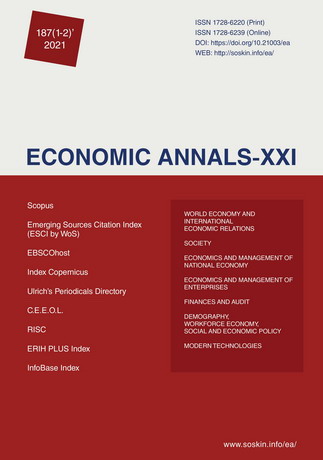Will production in the modern world and its regions return to a slow growth regime?
Will production in the modern world and its regions return to a slow growth regime?
Author(s): Vera Komarova, Iveta Mietule, Iluta Arbidane, Vladas Tumalavičius, Dalia PrakapienėSubject(s): Socio-Economic Research
Published by: Institute of Society Transformation
Keywords: Production Growth; Demographic Component of Production Growth; Economic Component of Production Growth; Spatial Inequality; Slow Growth Regime; Regions of the World; Growth Management;
Summary/Abstract: The main idea of this paper originated from the analysis of the fundamental research of the French economist Th. Piketty «Capital in the Twenty-First Century» (2013). Based on the study of historical data he argued that in the long-term global production growth has always been relatively slow and it will slow down even more in the future, at least with regard to its demographic component. The purpose of the presented research is to investigate empirically to what extent the dynamics of world production at the beginning of the 21st century corresponds to a slow growth regime (both in its demographic and economic component) and to find out whether there is production growth inequality between the regions of the world. The theoretical part of the research methodology is based on a unified growth theory. It explains why production growth has led to a significant increase in inequality between regions of the world over the past two centuries and contributed to further division of the global economic space into «worlds-economies» with different patterns of production growth. In the empirical part of the study, the authors use the methods of panel data analysis. During the period from 1992 to 2019, there was a slowdown of global production growth only in its demographic component, while the world average increase in the economic component of production growth (and, consequently, the total production growth) is constantly accelerating. However, its structure and pace vary significantly between regions of the world. The modern world can be conditionally divided into «worlds-economies» which have different, sometimes diametrically opposite, patterns of production growth.At the beginning of the 21st century, most regions of the modern world are still far from a slow growth regime in terms of production, especially with regard to its economic component, which cannot last long without a substantial dematerialization of the produced GDP.
Journal: Економічний часопис - ХХІ
- Issue Year: 187/2021
- Issue No: 01+02
- Page Range: 4-14
- Page Count: 11
- Language: English

